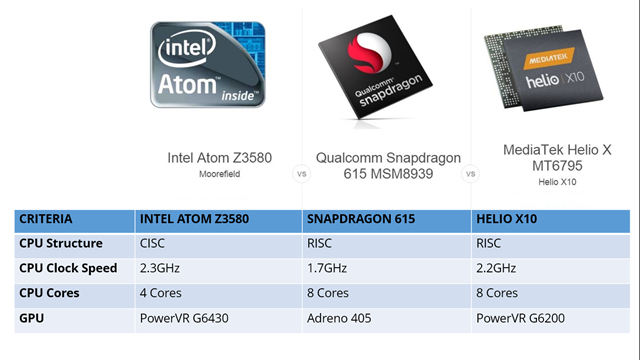Buying a phone today is downright confusing, period. First off, the budget segment is filled with high end performing devices which boast of specifications that rival the flagships of not so long back. Then there’s the popularization of Chinese players in the market, which although have a long way to go in building their reputation with the Indian audience, offer tremendous value for money packages.
Things do seem to get intimidating, we totally get it. Luckily, sites like FindYogi do provide a nifty comparison tool and price guide to make the process of choosing a smartphone more reliable and seamless. But behind all the processor speeds, megapixels and screen resolutions, there’s a story that remains to be said.
So, in this article, I take a look at the building blocks of phones. I go into deep analysis and comparisons, and try to offer a comprehensive guide for the average Indian consumer, while at the same time attempting to iron out the technical jargon to make the understanding more fruitful.
Processors:
Alright, smartphone 101: The processors are the heart and soul of the device. All the functionalities – be it the camera, display and even handling high-end graphic games are governed by the processor in the device. An engine tucked beneath the hood of the smartphone, the processor is in most ways one of the most crucial factors in picking a smartphone.
32-bit processors are passé, and the world has now accepted 64-bit processors as the reigning standard. The primary reason behind this was the popularization of ARMv8 as the uniform chipset within phones, which enables faster access to resources and seamless and efficient switching between applications (aka process threads).
So, the most popular processors in the sub 15,000 budget segment include 64-bit processors such as the Qualcomm Snapdragon 615, Helio X10 and Intel Atom Z3580, the latter being a favorite (and exclusive) chipset for ASUS devices.
Without getting too technical, here’s a brief spec showdown among these three processors:
I know, I know, I’m bombarding you all with numbers. But these numbers are important to get out of the way before we jump into the actual juice of the matter – which processor is better.
The Intel Atom Z3580 is present in ASUS devices such as the ZenFone 2 and ZenFone Deluxe has a CISC architecture. What this basically means is that more cycles are performed per second, so a phone with a CISC architecture gives more performance, albeit at a disadvantage of increased power consumption.
Let’s zoom in on the Snapdragon 615 and Helio X10 now. The 615 is the processor of choice for phones such as the ZenFone Selfie and Mi4i among others, and the main reason a 615 is powerful is because it uses big.LITTLE technology – which enables a processor to intuitively change the core usage according to the application being run. In simple words, what this means is when the user is playing a game, the powerful, higher clocked cores are active, but in regular tasks the lower clocked cores become active. This ensures improved efficiency.
The Helio X10 is a chipset in phones such as the LeEco 1S and the Meizu MX5, and it is simply put, a better version of Snapdragon 615. It uses Heterogenous Multi-Processing, which takes the 615’s transition game a step further by utilizing all cores at the same time, or just a single core for low-intensity tasks. This improves battery life greatly.
Briefly going over the GPUs, the PowerVR G6430 on the Intel processor has a max clock speed of 533MHz, while the PowerVR G6200 on the Helio X10 is clocked at 700MHz. Adreno 405 is clocked at 550MHz. More the clock speed, more the ability to handle graphic intensive applications.
So, bottom line, which processor should you prefer?
The answer is governed ultimately by what you are looking for from your phone.
If you want sheer performance and a balance between the performance and battery life, go for the Helio X10 processor.
However, not many phones in India come with this processor, so the next best alternative in this regard would be the Snapdragon 615, which does a good enough job of balancing performance and battery life.
The Intel processor is an all-round performer, however, it would get a little hotter and consume more power when it comes to graphic intensive tasks. Put it this way: Intel’s architecture allows for heavy tasks to be done by consuming a lot of power. Snapdragon can accomplish the same tasks by consuming lesser power. That being said, ASUS phones have some decent specifications and software optimizations, so if you’re a regular user who might not throw graphic intensive tasks at the phone, this should be your pick.
And, if you’re looking to buy a flagship device, the processor wouldn’t really come in the way of your buying choice, but I would still recommend the Snapdragon 808 or 820 over the 810, mainly since the 810 is notorious for overheating.
Display:
I won’t delve much into the screen technologies, but I’ll focus on a key factor which plagues people while buying a phone – the screen resolution. Generally, a screen resolution of 1080p has been established as the standard for most devices nowadays, with flagships opting for a higher QHD resolution.
However, key factors need to be kept in mind while going for a higher pixel density device – the battery must have a sufficient capacity. Generally, higher the resolution, more is the power consumption. So more battery juice would imply more screen on time on a lesser resolution display than a higher resolution display.
1080p is the best screen resolution since it offers great clarity at optimum viewing distances. However, if you’re going for a QHD display, make sure that the battery capacity is at least 3000mAh.
Camera:
Addressing the biggest myth when it comes to cameras – more megapixels do not mean a better, clearer image! They simply imply a larger image.
Cameras are likely to be affected by other finer aspects: such as low light performance, color reproduction, features such as optical image stabilization, shutter speed, and ISO range, and secondarily by the resolution. Video modes would be likely to be affected by the stability of shooting and resolution of the video taken because let’s face it, playing a 720p video on a 4K television display would be almost pointless.
In this regard, I would suggest going beyond the megapixel count, and focus on the specs of the sensor when you’re buying a phone. Features such as focal length of the lens, dual camera modules at the back, laser focus and even the construction of the flash play major roles in differentiating between a mediocre camera phone and a great camera phone.
For front camera, the viewing angle should be wide and there should be additional features such as face detection or smile captures. The inclusion of a flash, or a fingerprint sensor (As I’ll discuss shortly) will be added enhancements.
These are mere hardware aspects. Software aspects include what kind of additional add-ons are included to enhance the experience. For example, if there’s a full blown manual mode incorporated within the camera, chances are that the user will have more control over the image.
So, if you’re in the market for a camera centric device, you should keep the following things in mind (in the order specified):
One, see the sensor specs.
Two, see the software and additional features.
And Three, see the resolution of the camera.
Operating System/ User Interface:
Alright, this is where things boil down to complete user preference. One might prefer a simple, minimalistic UI, and in this regard, there’s stock Android present in Nexus and Motorola devices. On the other hand, you might want a flashy UI with a host of useful features, and then I would suggest UIs such as MIUI (Mi), ZenUI (ASUS), EMUI (Honor) and VibeUI (Lenovo). If you’re one for customizing everything, I would recommend devices running Cyanogen (YU/OnePlus) or OxygenOS (OnePlus).
Looking to buy a Samsung device? Touchwiz has really improved, so the major drawback of the phone being filled with bloatware can now be ruled out.
Prefer to buy an iOS device? Or a Windows one? Choices are automatically reduced, and budget shall be the primary deciding factor.
Memory:
This one’s a no-brainer, actually. More the internal memory, more the RAM, more should be your preference towards it. If there’s support for external storage, even better!
Additional Features:
The biggest add-on feature for smartphones which is turning out to be quite popular is the fingerprint sensor, and it’s really quite amazing to see the simple fingerprint sensor being incorporated in devices ranging from sub 8k ones (like the Coolpad Note 3 Lite) to the uber expensive iPhones.
So, fingerprint sensors are mainly useful for providing an additional layer of security on the device, which allows only a handful of authorized users to unlock the device. More than that, the use cases are dependant on the placement of the fingerprint sensors.
A fingerprint sensor placed on the rear of the device, below the camera module, is becoming more popular. The reasons? The fingerprint sensor automatically comes in at a comfortable placement position for the index finger, and moreover, it can double up as a camera trigger when you’re taking photos from the front camera. A more important use case would be to perform NFC-based payments, which although not very popular yet in India, will definitely grow in the next few years.
Battery:
Hands down the most important hardware feature to consider, the battery is quite literally the life source of a phone. Higher capacity, quick charging features, and software enhancements for more screen-on time are the prerequisites to check when you’re deciding on a phone with a larger battery.
After Sales Service:
Finally, coming to perhaps the most relevant aspect to consider while buying a smartphone is the after sales service, or the customer-centric division of the smartphone OEM. The biggest complaints with the cheap Chinese smartphone players in the Indian market is the absence of a dedicated customer service division. This is actually the driving force behind more companies producing their products in India and setting up multiple service centers throughout the country.
People who have a broken display and are looking to get it replaced will agree with me when I say this: it’s way easier to get a Samsung phone repaired, rather than getting a YU device repaired. It’s not a direct factor to consider while buying a smartphone, but it’s an important factor nonetheless.
Budget/ Round up:
Buying a phone – anything, for that matter – is ultimately affected by the budget of the buyer. The budget to mid-range segment (Rs. 7,000 to Rs. 20,000) is full of phones that boast flagship specifications. Phones including the Mi4 (a slightly older device, but a good one nonetheless), the LeEco 1S, the Coolpad Note 3 Lite, the OnePlus X, the YU series, some ASUS phones and Lenovo’s Vibe X3 all have specifications which are worth their salt, and more.
If you are a frequent buyer of phones (buying span under two years), I would recommend buying a mid-range handset. Most OEMs are showing interest in this price division, and are beefing up the specifications on their budget lineup devices, so the customer will have a good advantage.
However, if you’re buying a true blue flagship, things get slightly interesting. Budget is no longer a constraint and all devices north of the 30k price mark boast of similar, powerful specifications. In that scenario, it all boils down to whether you favor iOS or Android!
Conclusion:
We’re coming across new launches in the Indian smartphone vertical on an almost regular basis, and with the cutthroat competition amongst various OEMs, it is often the customer who is confused and left dazed when it comes to choosing a device. Keeping the above-enumerated factors in mind, and relying on comparison guides such as FindYogi, we’re sure that you can make a more quantified and informed decision regarding your next smartphone purchase!
This is a guest post by Nivedit who is a gadget and technology freak. He is part of the editorial team at FindYogi.com – Shopping Comparison Site.













Good article. It would be more helpful to list out some of the best 2 or 3 smartphones in each budget like below 10,000, below 15,000, below 20,000 etc
We already have such lists, like best phones below 15k, 10k, 7k, camera phones, selfie phone and more.
hi,
Nice Article…
Its very helpful…
Thank you for sharing…
Very informative post. Do check our site mobikart.com for mobile phones.
Mobikart is an ecosystem for everything mobile. Our vision is to become a one stop destination for all mobile needs. A place where users can visit and find everything about mobiles, products related to mobiles, compare and buy from top stores online and offline. We plan to build an environment for buyers which is fast, efficient and very easy to use. We want to aggregate as much information as we can from the internet and help people to take better decision for buying and saving on time and money.
Hi,
Majority of peoples (personal experience) just prefer Camera, RAM & Battery and just ignore the processor, BTW nice guide.